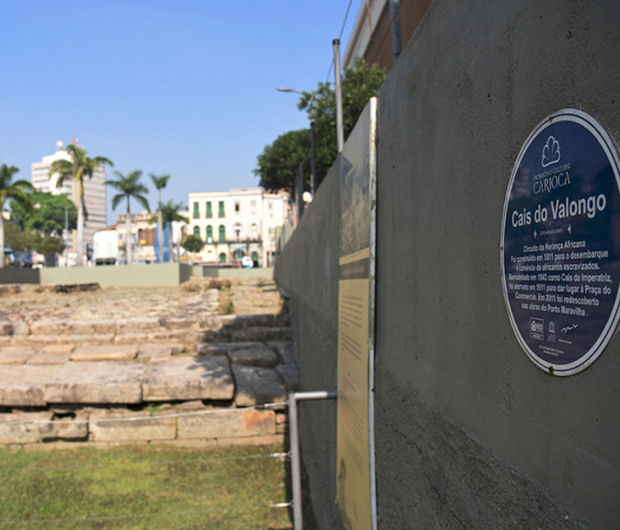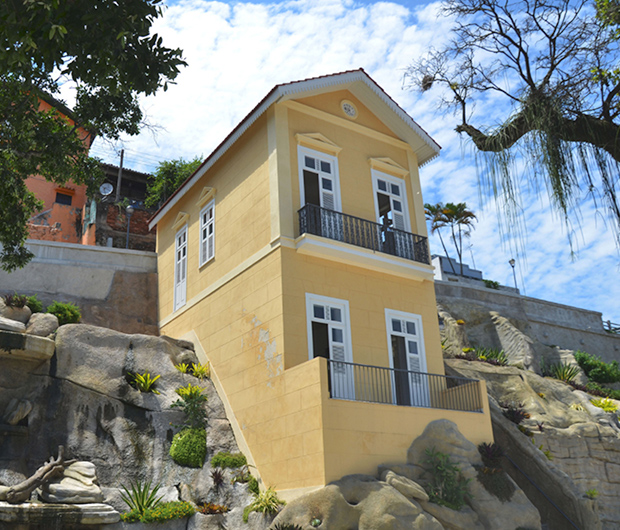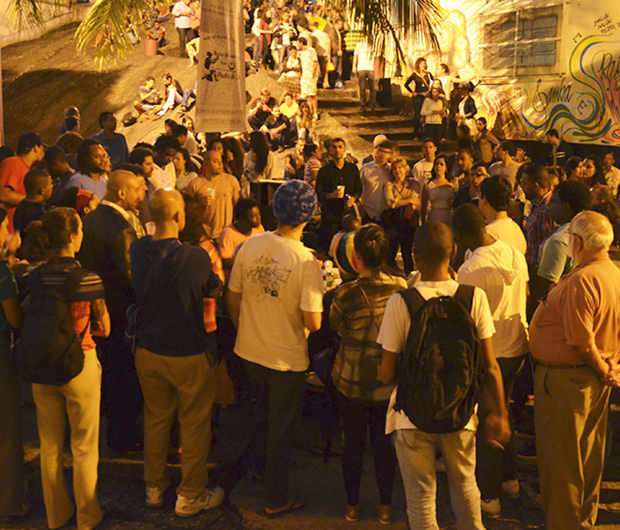Porto Maravilha has a historic tour to celebrate black people’s cultural inheritance
One of the good consequences of the renovations to build Porto Maravilha was the surfacing of archeological sites that brought back a part of black people’s history in Rio and helps us to understand the process of the African Diaspora.
The excavations findings motivated the creation of a Work Group in charge of proposing measures to estabilish an African Cultural Inheritance Historic and Archeological Circuit in Rio. By city decree in 2011, six spots were designated as of cultural importance and its preservation determined.

Photo: Alexandre Macieira | Riotur
First one of them is the Valongo and Empress Harbour that represented the arriving of black people in Rio. It was inaugurated in 1811, when British ships were already hunting slaver boats on the Atlantic and it was necessary to find a more descreet spot to disembark the human merchandise. The new harbour strengthened the slave market, which received around 500,000 people. As Brazil was forced into abolishing slavery the port received modifications until it was destroyed in 1911. In the parade of Carnival 2014 Portela samba school retold the history of this port.
Watch the Carnaval 2014 Portela parade about Cais do Valongo:
The Pretos Novos Cemitery reminds us of the violence towards the slaves. Even the young black men often didn’t resist the harsh conditions of the slaver ships trips and died days after disembarking. In Largo do Depósito, the third spot, the slaves were traded and sold. The market was officially closed down in 1831. Valongo Garden is a symbol of how the official history tried to make us forget how black people were treated back then. In a former renovation of the region, in the beginning of last Century, many places were unveiled: houses where the slaves were fed to regain weight after the tough trip from Africa. The governments before tried to hide these places.

Photo: Alexandre Macieira | Riotur
Pedra do Sal was a point where people used to disembark salt charges during the 17th Century. After the Valongo Harbour was estabilished the place became a center of cultural resistence and celebration for the black community in Rio. It’s considered the birthplace of samba. In those small alleys the first carnival groups were created. The place earned its status as a Cultural Inheritance Site in November 1984.

Photo: Alexandre Macieira | Riotur
Finally the old school of Freguesia de Santa Rita, the first public school in Latin America became José Bonifácio Cultural Center and a reference in African-Brazilian culture.
These spots were signaled as points of the Historic Circuit. Besides that, the work group created the guided tours and think of other activities that can enlarge the knowledge on the African Diaspora to Brazil.
The guided tours are made usually on Tuesdays and Thursdays, at 9AM or 2PM and have to be scheduled in advance at: http://portomaravilha.com.br/noticiasdetalhe/4675 .
The circuit takes about 90 minutes to be completed.

COMENTÁRIOS